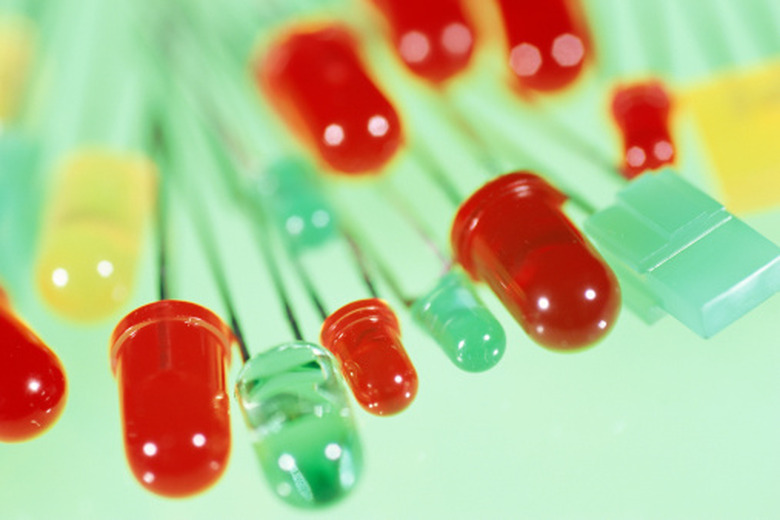The Positive & Negative Effects Of LED Lights
A light-emitting diode is a type of semiconductor that emits light when current runs through it. LED lamps are composed of numerous LEDs grouped together. Recent improvements in technology have improved the luminosity of LEDs and made LED lamps a suitable replacement for incandescent or fluorescent lamps. is a semiconductor light source. LEDs are used as indicator lamps in many devices and are increasingly used for other lighting.
Pro: Environmentally Friendly
Pro: Environmentally Friendly
LED lamps use considerably less electricity than incandescent or fluorescent light sources. For instance, a 5-to-7-watt LED light bulb is equivalent in brightness to a 60-watt incandescent bulb or a 15-watt fluorescent light. Installation of LED light bulbs has been touted by environmental conservationists as an easy way to reduce consumption without fundamentally changing human behavior. Moreover, unlike fluorescent and incandescent bulbs, LED bulbs do not contain mercury or any other toxic material.
Pro: Cost-Effectiveness
Pro: Cost-Effectiveness
Lower energy consumption also translates into lower utility costs for consumers. Although LED light bulbs are considerably more expensive to purchase than incandescent ones (approximately $15 versus $3 respectively), their long life-spans and low energy costs make up for this in the medium-to-long term. LED light bulbs last approximately 10 times longer than incandescent bulbs (about 60,000 hours).
Con: Directional Lighting
Con: Directional Lighting
LED light bulbs are directional, as light only emanates from the top half. As a result, LED light bulbs do not scatter light in all directions the way incandescent and fluorescent bulbs do. While LED light sources are ideal as directional light sources or spot lights, they are less effective as ambient light sources (even when using the general purpose varieties).
Con: Short-term Cost
Con: Short-term Cost
Although LED light bulbs are cost-effective over time, they are several times more expensive as incandescent lights. Consequently, for individuals seeking short-term lighting solutions, incandescent light bulbs will likely be preferable. However, as the scale of production increases and the technology improves, it is likely the cost of LED light bulbs will likely diminish.
References
Cite This Article
MLA
Kwak, Patrick Stothers. "The Positive & Negative Effects Of LED Lights" sciencing.com, https://www.sciencing.com/positive-negative-effects-led-lights-8492204/. 24 April 2017.
APA
Kwak, Patrick Stothers. (2017, April 24). The Positive & Negative Effects Of LED Lights. sciencing.com. Retrieved from https://www.sciencing.com/positive-negative-effects-led-lights-8492204/
Chicago
Kwak, Patrick Stothers. The Positive & Negative Effects Of LED Lights last modified March 24, 2022. https://www.sciencing.com/positive-negative-effects-led-lights-8492204/
